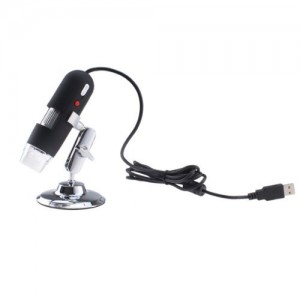The Value and Use of Digital Microscopes and Digital Photos for Pest Identification
I have entomologist friends who resist identifying insects based on photos sent to them from a client or service technician. Although I understand their concern that it can be difficult to positively identify an insect based on a picture (quality of the photo may be poor or wrong features captured), many of the insects we do receive for identification can be identified with a great amount of certainty based on a photo submission. As long as we specify that the identification is tentative or based only on features observed in the photo, it can provide some timely and critical information to field personnel and clients. If a physical specimen is needed for positive identification, the pest management service technician or client can be instructed to send or deliver the specimen for further ID. If it can be identified based on photo, the client may benefit in not having to lose chain of custody and control of the specimen.
A recent study by a local committee of entomologists performed some tests on different digital microscopes available. These scopes connect to a computer and use the lap top screen to view insects. They also have picture taking capability. They can be used by clients, technicians or office staff to send insect photos to an entomologist for further identification. It can be used to identify insects, photograph insects for submission to an entomologist and can be used in training to train on identification of insects. CTC rated several digital scopes based on quality of picture, ease of use and cost. The top two scopes are as follows:
| Scope | Supplier’s Website | Approximate Cost | CTC Star Rating |
| Celestron | www.sciplus.com | $65 | 4.9 stars |
| DinoCapture | www.dinolite.us | $600 | 5 star |
Some guidelines for photo submissions:
 Sending a good quality photo will greatly enhance the receiving entomologist’s capability to identify the insect. Insects photographed should be in good condition and clean. Insects inside plastic shrink wrap should be removed for clearer photographing. If the insect is covered in flour or debris, it can hide features needed for identification. If dirty, clean insects like beetles, with a little isopropyl alcohol. Do not subject insects like moths or butterflies to an alcohol bath since it may destroy characteristics needed for I.D.
Sending a good quality photo will greatly enhance the receiving entomologist’s capability to identify the insect. Insects photographed should be in good condition and clean. Insects inside plastic shrink wrap should be removed for clearer photographing. If the insect is covered in flour or debris, it can hide features needed for identification. If dirty, clean insects like beetles, with a little isopropyl alcohol. Do not subject insects like moths or butterflies to an alcohol bath since it may destroy characteristics needed for I.D.
Different species of insects will be identified by different features. So, for filth flies, wings are a key characteristics in identification and you may be asked to photograph the wing of the fly being submitted. Certain leg segments images can be required for beetle identification, and the identifying entomologist may ask you for a close up of the legs. Working with the entomologist to determine what features need to be photographed can be helpful in getting the proper identification accomplished. Be prepared for requests for certain features to be photographed as needed.
If the specimen cannot be identified via a photo, you may need to submit the specimen by mail.
Specimens should be protected from damage by placing them in a vial or other crush proof container. Insects other than moths and butterflies can be preserved in isopropyl alcohol. Many pest management firms or universities will have their own form to be submitted with the specimen. Typical information to provide with the shipment includes: name of sender, where collected, contact phone number or e-mail address for response. If the insect was taken from a particular product or commodity, that information should also be included. If the specimen may have come on shipments from another country, that information should also be provided.
One additional side benefit of photo ID submissions can be the ability to see seasonal trends in pest activity more quickly. Due to the ease and speed in sending digital photos, I receive far more requests for identification than I did when physical samples only were submitted. Although the electronic trend may increase the identification work load, it provides valuable information regarding pest activity. Technician educational bulletins or tech tips can be generated and sent to employees and clients based on these trends.
